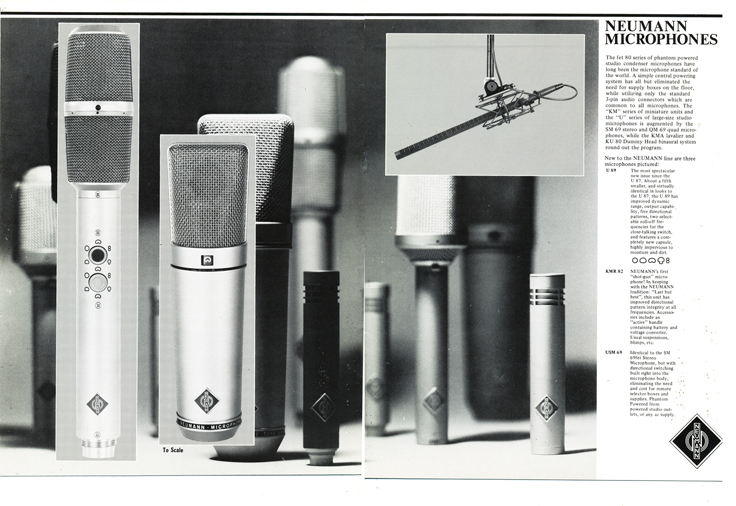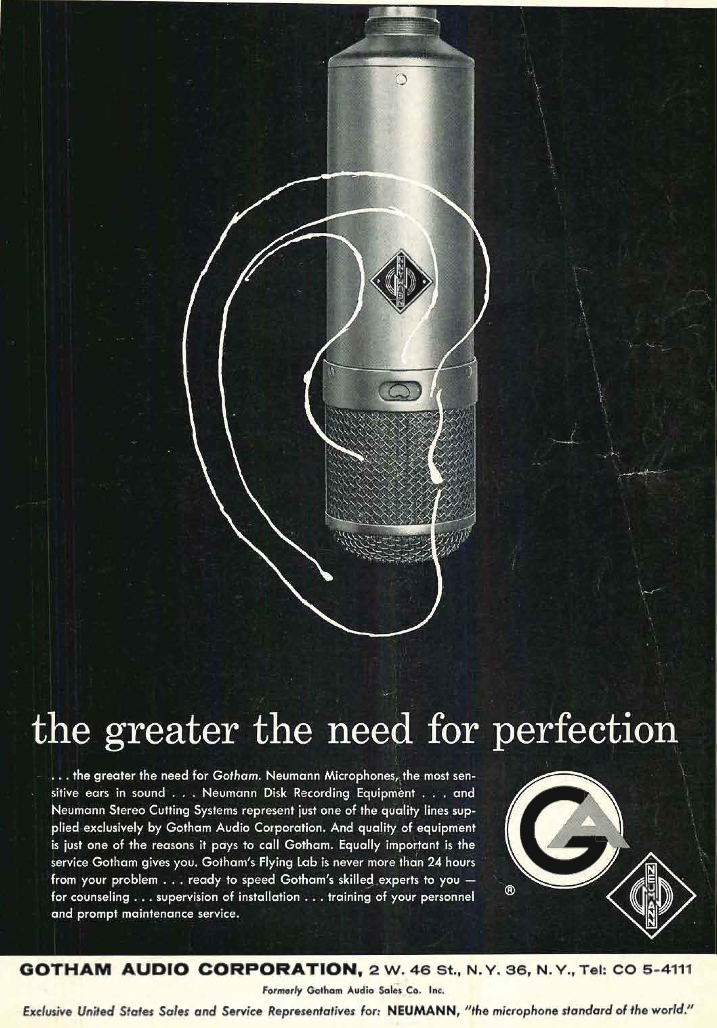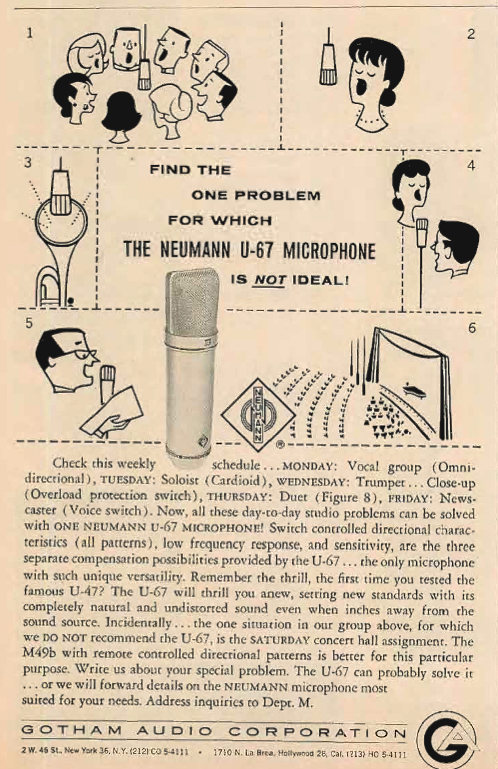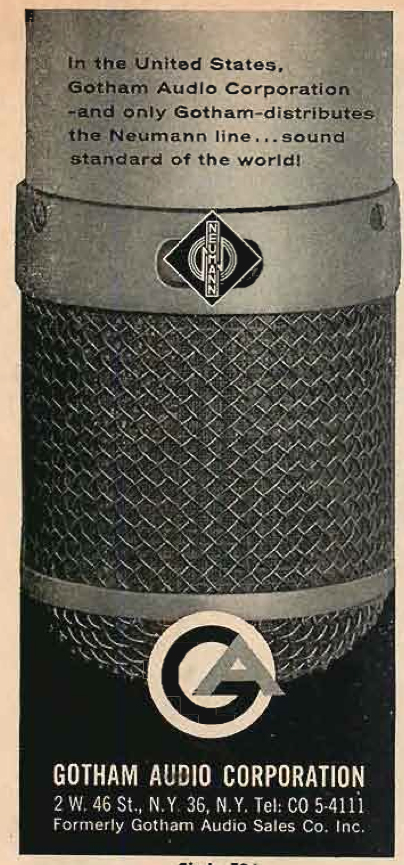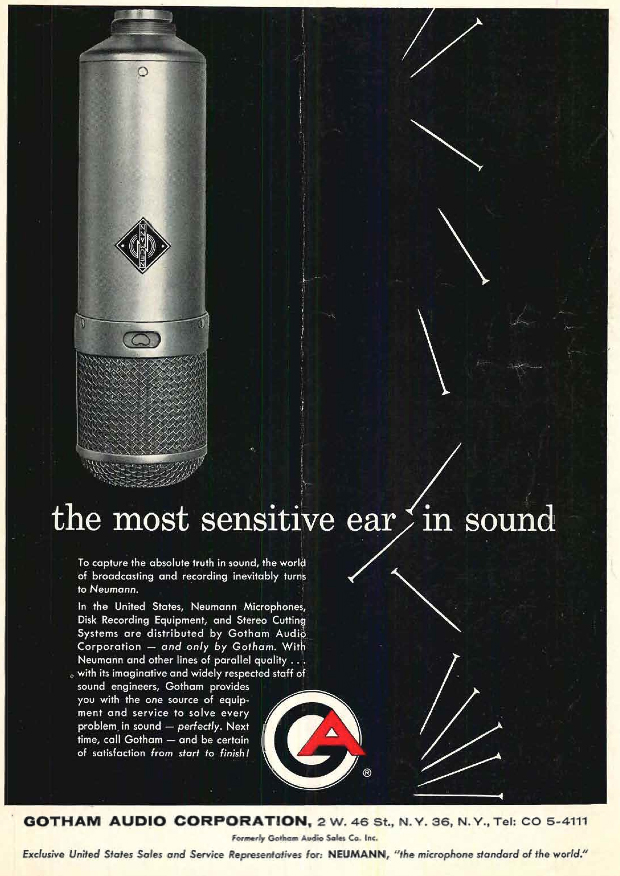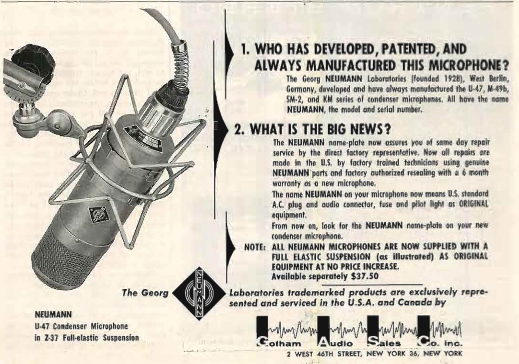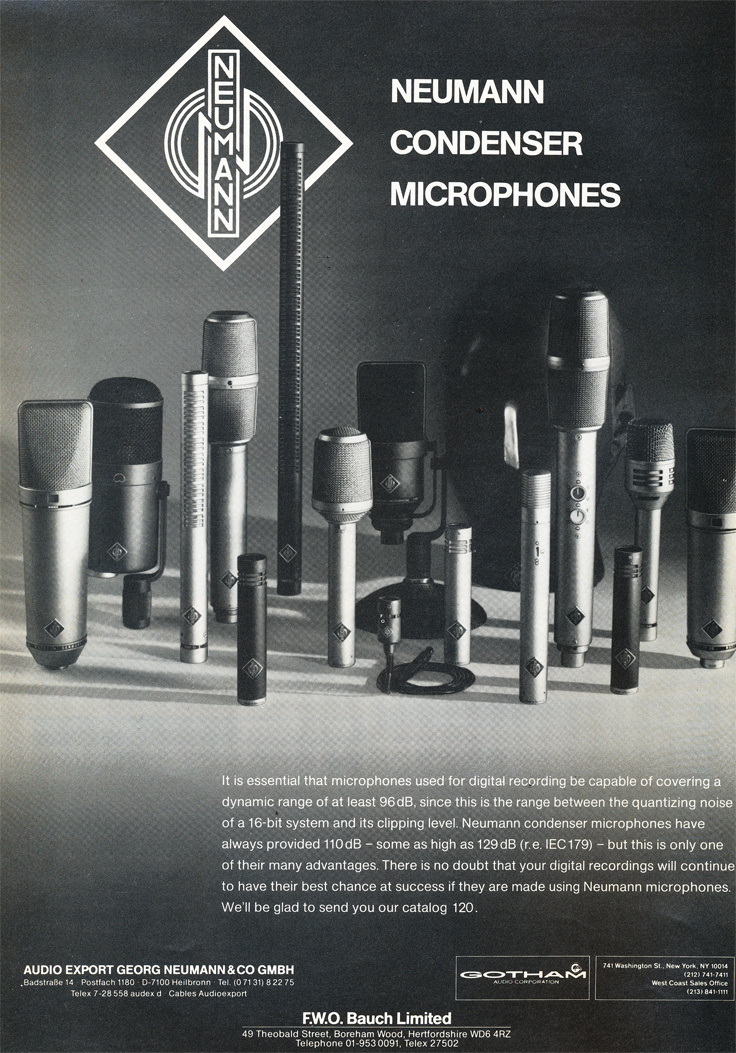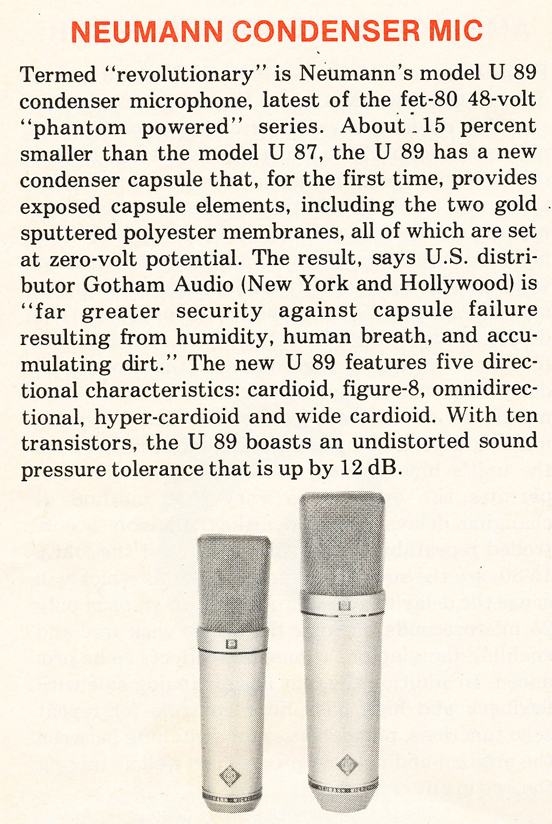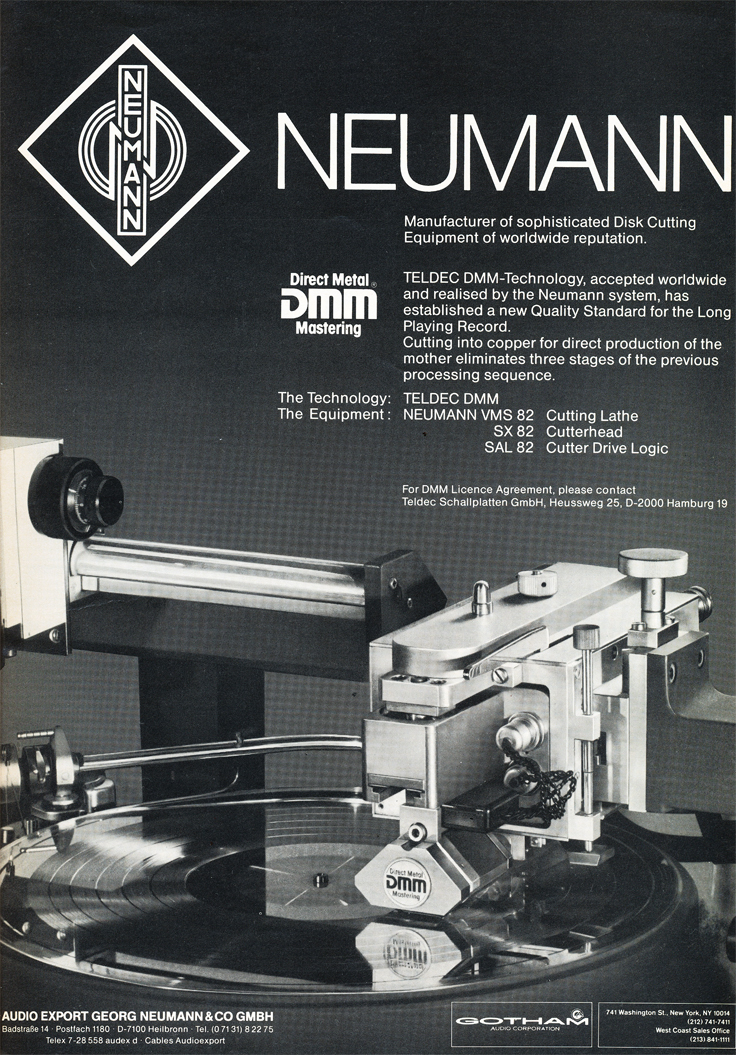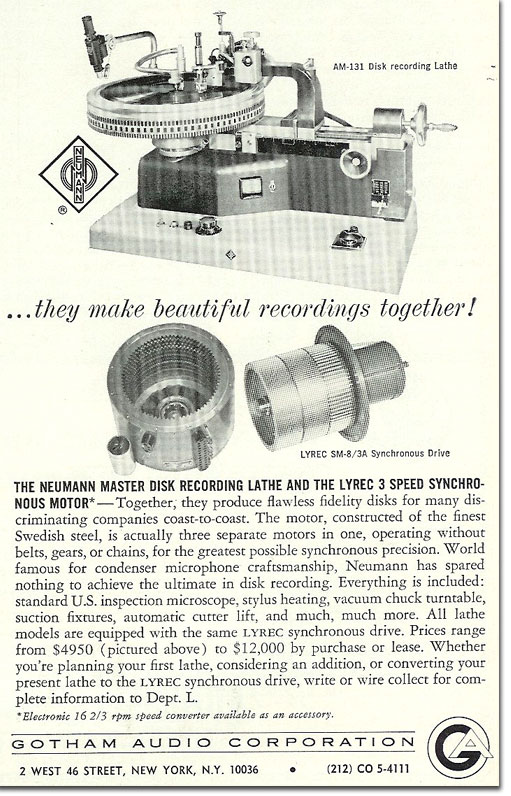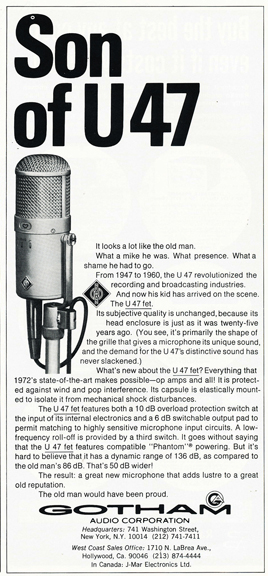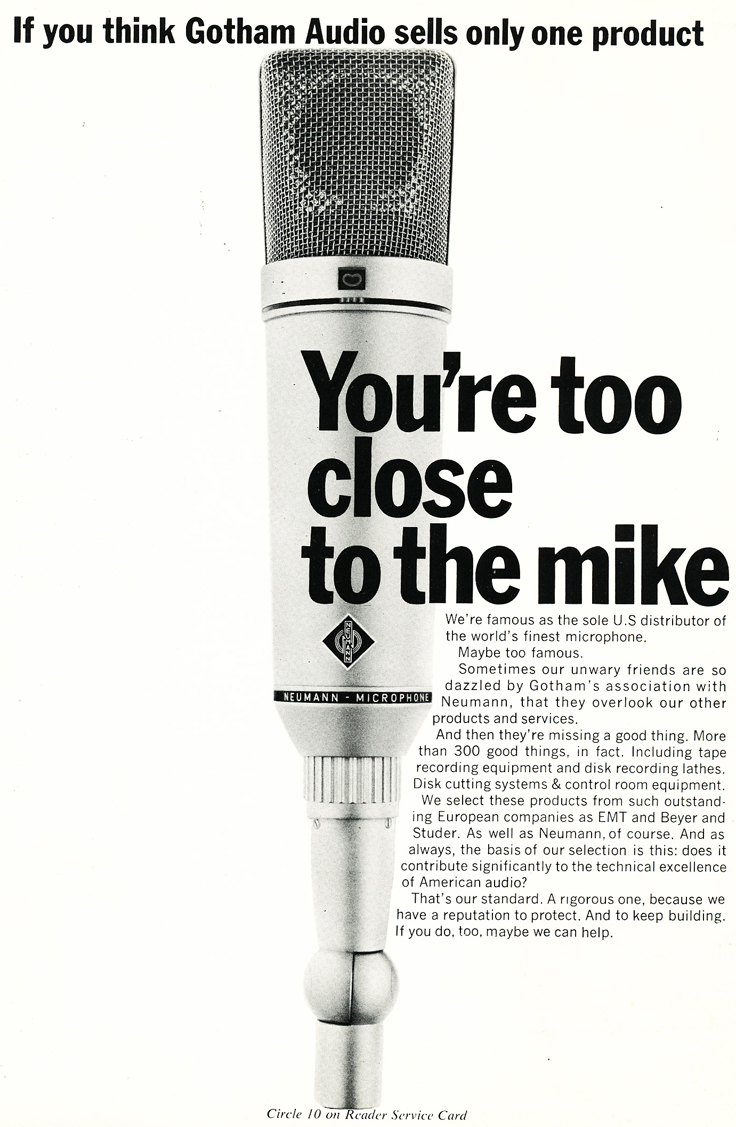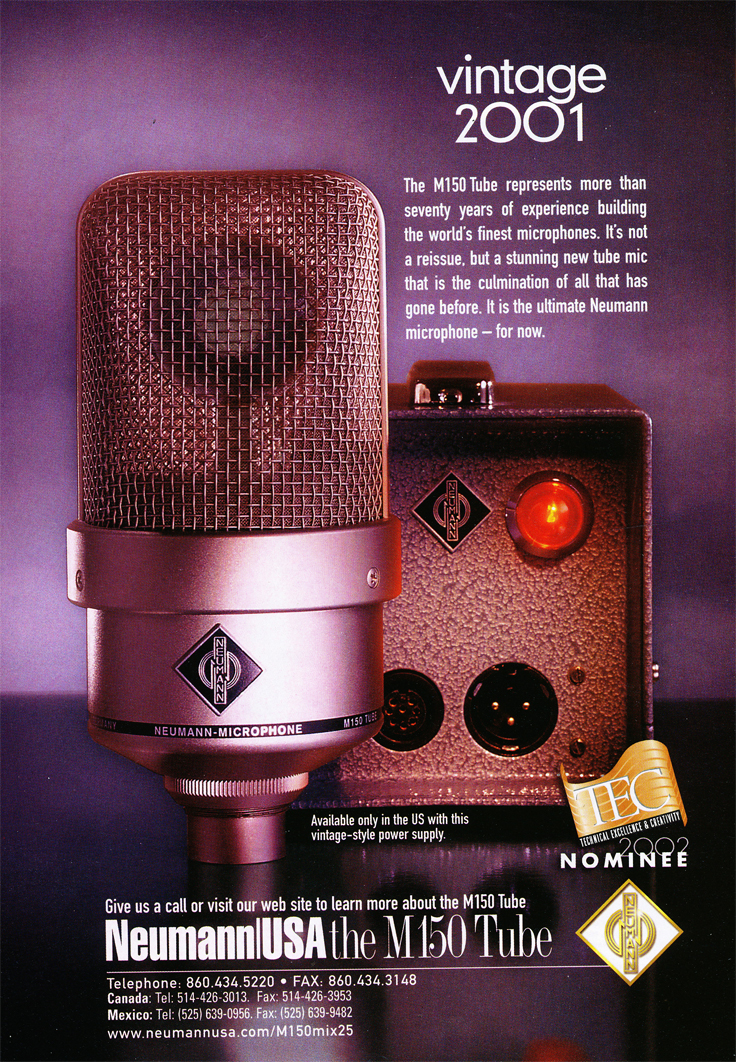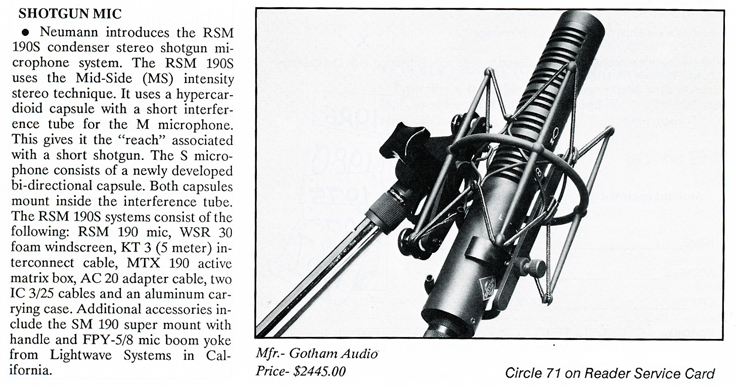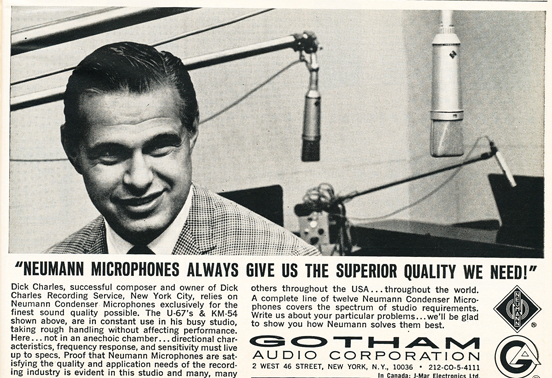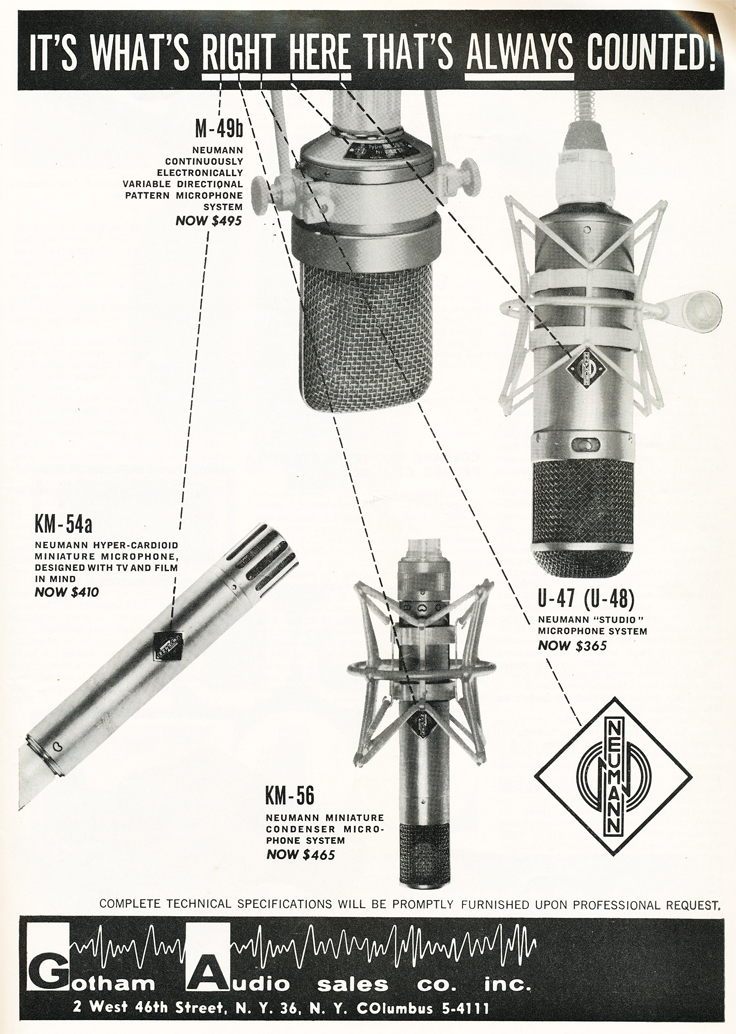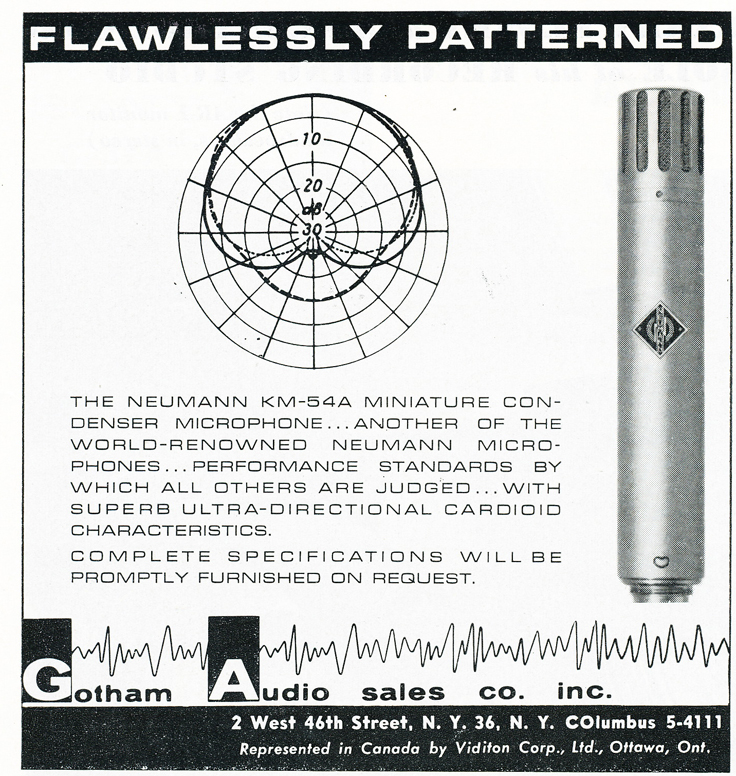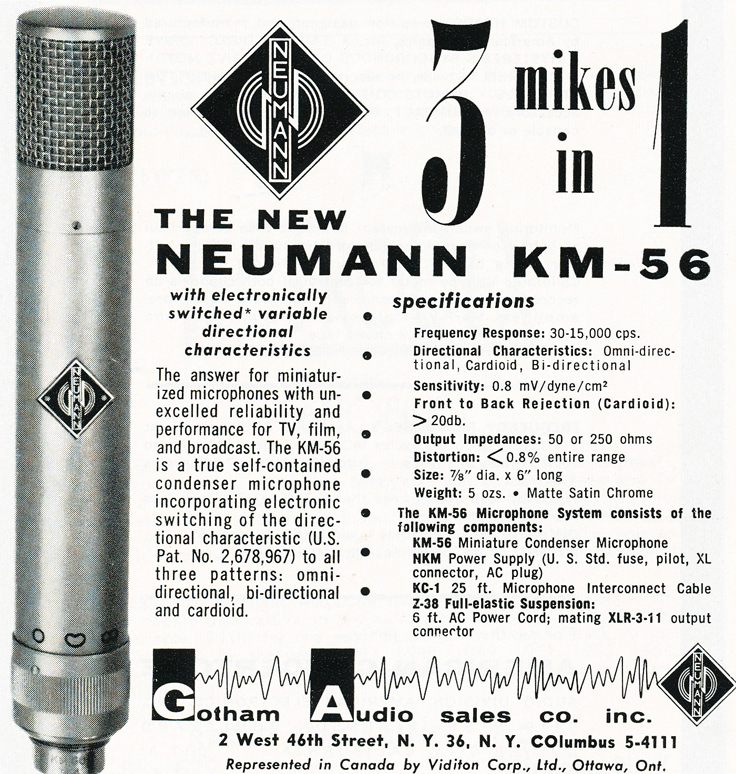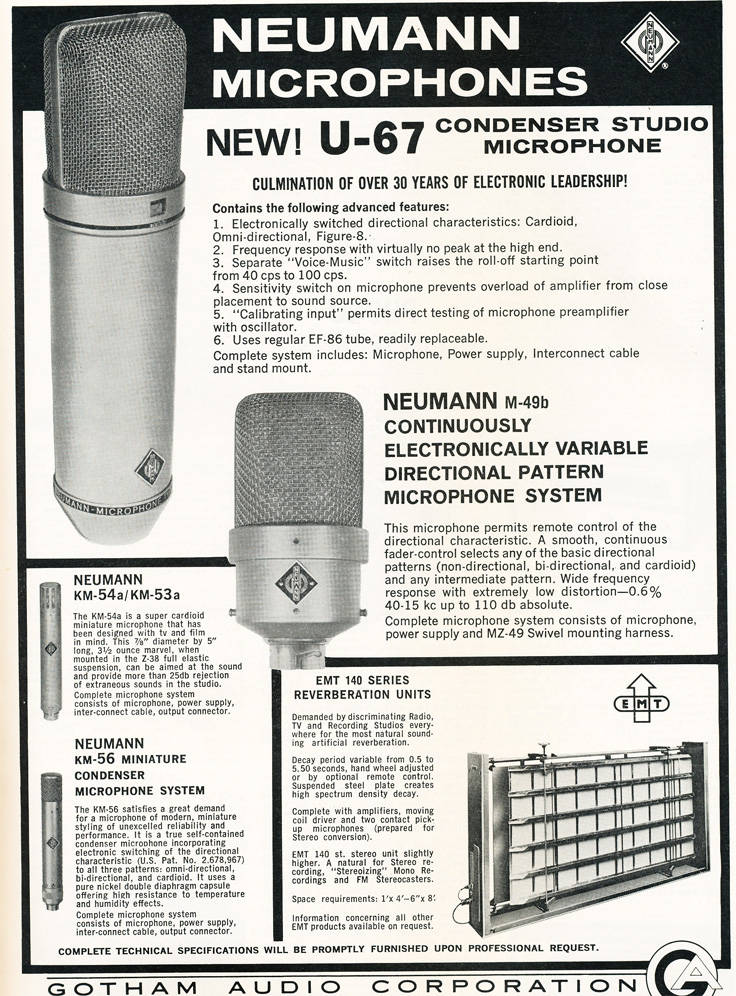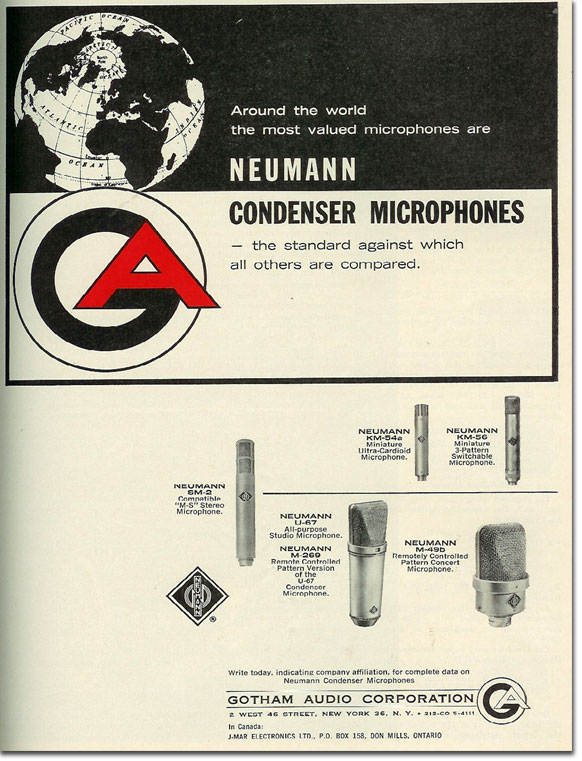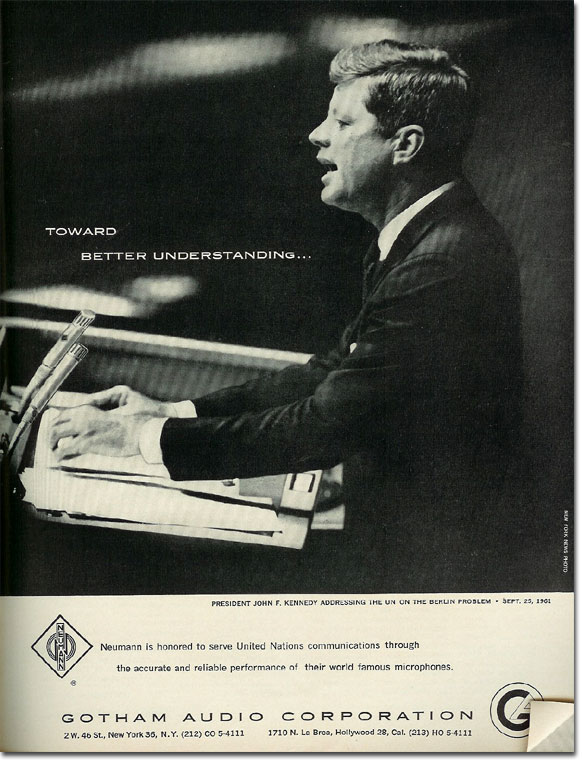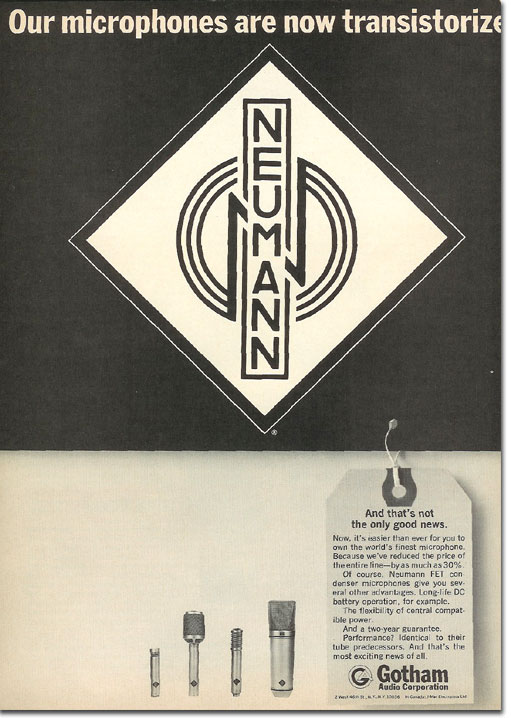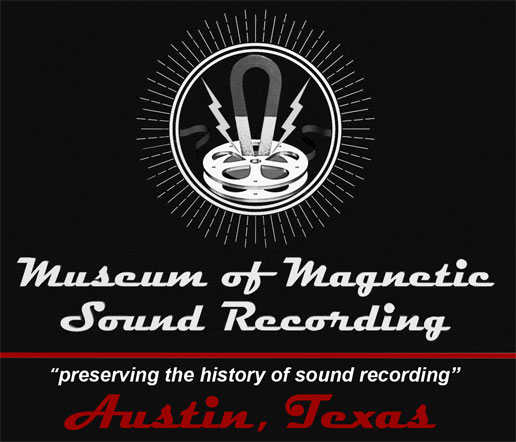
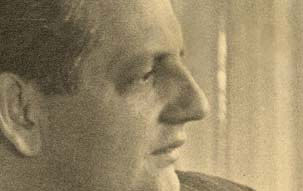
Georg Neumann - October 13, 1898 - August 30, 1976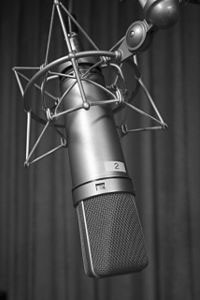
Georg Neumann GmbH (Neumann), founded in 1928 and based in Berlin, Germany,is a prominent manufacturer of professional recording microphones. Their best-known products are condenser microphones for broadcast, live and music production purposes. For several decades Neumann was also a leading manufacturer of cutting lathes for phonograph disks, and even ventured into the field of mixing desks for a while.
The company's original product was the CMV 3, the world's first commercially available condenser microphone. It was a rather large (40 cm tall, 9 cm diameter) microphone with several interchangeable capsule heads which gave it different directional patterns. Because of its shape and size, this microphone was often known as the "Neumann bottle". It is often seen in historical photographs of public events in Germany through the period of World War II.
Neumann's factory in Berlin was damaged by Allied firebombing in November, 1943. Georg Neumann relocated his company to the much smaller town of Gefell in Thuringia and resumed production at the beginning of the following year. At the close of the war, Thuringia fell under Soviet control and the company eventually became an East German "Publicly Owned Operation" (i.e. a state-run enterprise). 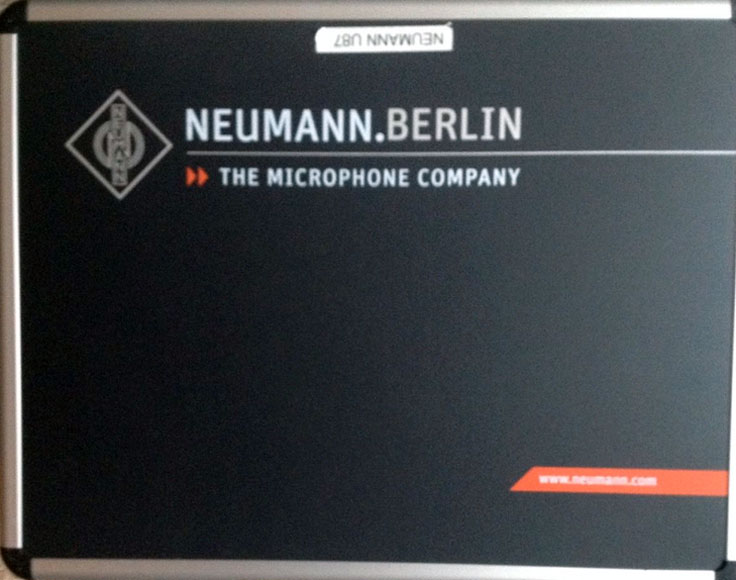 After the reunification of Germany, the company in Gefell, which had continued to use the Neumann name, became known as Microtech Gefell.
After the reunification of Germany, the company in Gefell, which had continued to use the Neumann name, became known as Microtech Gefell.
Meanwhile, Georg Neumann re-established his company as "Georg Neumann GmbH" in one of the Allied 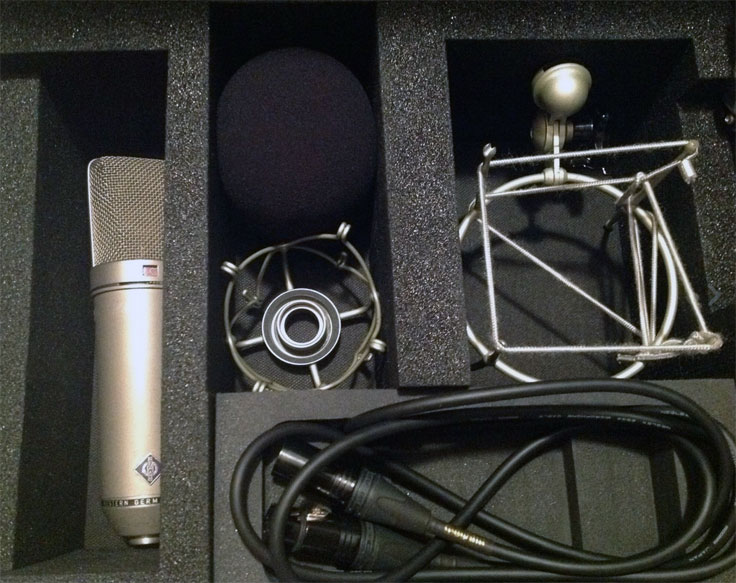 sectors of Berlin and in 1949 began producing a new modelof switchable pattern microphone,the U 47, based on the M 7 capsule of the earlier CMV 3 series. This microphone was one of the first condenser microphones to gain widespread acceptance in the recording industry worldwide.
sectors of Berlin and in 1949 began producing a new modelof switchable pattern microphone,the U 47, based on the M 7 capsule of the earlier CMV 3 series. This microphone was one of the first condenser microphones to gain widespread acceptance in the recording industry worldwide.
In the United States, for example, the "sound" of the best-known crooners of the 1940s (e.g. Bing Crosby and later Elvis Presley) had utilized the ultra-smooth, rolled-off tone of RCA ribbon microphones; pop recordings in the 1950s (e.g. Frank Sinatra and later The Beatles) on the other hand were sharper, clearer, much more "present" and more "hi-fi"-sounding as the result of using condenser microphones with elevated upper-mid-range response. The U 47, which wasdistributed worldwide under the Telefunken brand name, was also used for some early classical orchestral 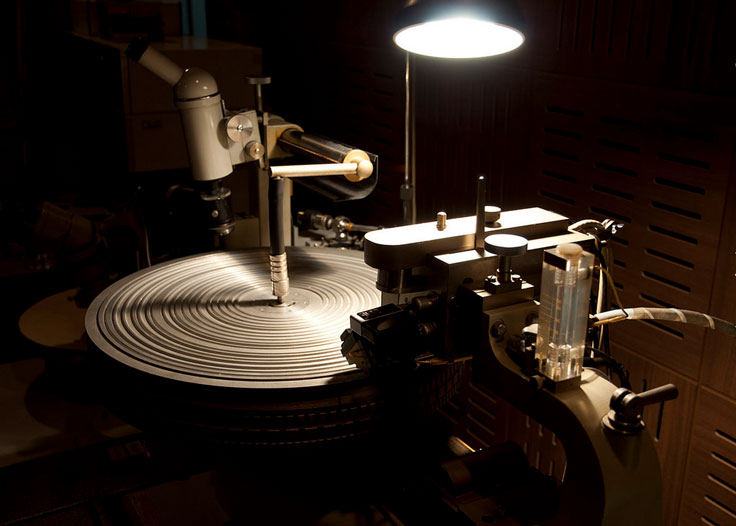 recordings in stereo.
recordings in stereo.
Neumann Record Cutting Machine (model: SX24) R2RTexas.com's Neumann U87 above
Other important microphones introduced by Neumann during the immediate postwar period included the M 49 and M 50, both based on designs researched and engineered at the NWDR in Germany.The M 49 used the M 7 capsule in a configuration whose directional pattern was remotely controlled, the first microphone to offer such a feature. The M 50 featured a small, diffuse-field equalized pressure transducer embedded in the surface of a 40 mm hard plastic sphere, which gave it increasing directionality above the mid-range frequencies. The company also produced equipment for electroacoustic measurement, including calibrated measurement microphones and chart recorders.
During the period from 1953 to 1956 Neumann introduced a series of small condenser microphones (KM 53, 54 and 56) especially for use in television broadcast studios. In 1957 they introduced the SM 2 microphone, which was essentially a pair of KM 56 microphones in a single body, arranged so that their directional patterns could be controlled remotely. The SM 2 was the world'sfirst stereo microphone.
At the end of the 1950s, the Telefunken VF 14 vacuum tube on which the circuitry of the U 47 and U 48 had been based, was discontinued, so Neumann came underpressure to develop a successor. They decided to offer all three of those two models' directional patterns in a single microphone. In the meantime, the rock 'n' roll era had begun and some engineers were recording loud vocals with singers singing directly into microphones at very close range; when the U 47 or U 48 were used in this way, the result was considered by many engineers at the time to sound unacceptably harsh. (This could be considered ironic, since the U 47 and U 48 have a cult following today specifically for use in close-up vocals, with some engineers seeming to fancy that they are re-creating a "vintage" sound—whereas in fact, they are creating a sound quality that was specifically abhorred by many of the "golden ears" of the era—notable exceptions being Beatles producer George Martin and engineers Norman Smith and Geoff Emerick.) The result was the U 67, a microphone with less emphasis in its upper midrange response, giving it less of a "forward" tone color.
In 1964 Neumann developed a small cardioid capsule with considerably improved off-axis linearity; it was used in the KM 64 and U 64 microphones.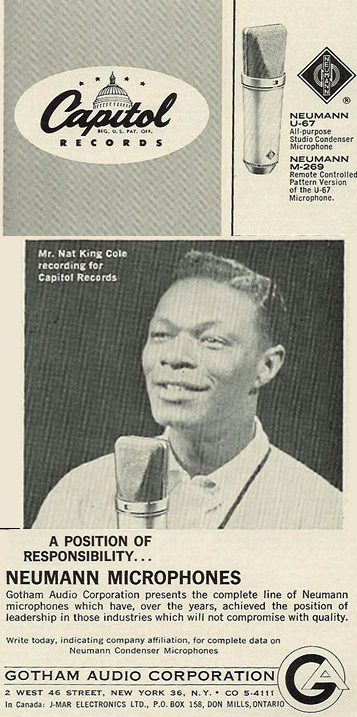
In 1965 Neumann began to introduce solid-state microphones. The first model was the KTM small cardioid, later followed by the "fet 70" series—transistorized versions of small omnidirectional, cardioid and speech cardioid microphones as well as a "U 77" transistorized version of the U 67. This series used the 12-volt A-B powering system (parallel powering, T-power or "Tonaderspeisung") as found in Nagra tape recorders, and was therefore incompatible with existing studio power supplies. However, standard two-conductor shielded cables (as were commonly used for dynamic microphones) could now be used for connecting condenser microphonesas well, obviating the need for special multi-conductor cables.
In 1966 Neumann adapted the "phantom powering" method that had been used for years in certain telephone systems, so that a compatible method of powering would allow tube microphones, solid-state microphones and dynamic microphones all to be connected to the same power supplies. Eventually the "fet 80" series grew to include over a dozen models, some of which are still in production as of 2014—the U 87, U 89, KMR 81, KMR 82 and USM 69. The best-known models from this series were the KM 84 small diaphragm cardioid and the U 87 three-pattern, large diaphragm successor to the U 67.
A Neumann U87 microphone (left)
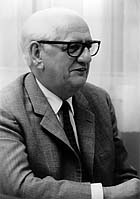 Georg Neumann - passed away August 30, 1976
Georg Neumann - passed away August 30, 1976
In 1983 Neumann began to introduce microphones with balanced outputs but no output transformer, starting with the model TLM 170. Eventually this "fet 100" or "transformerless" series was expanded to include the KM 100 modular series of small microphones (with seven different "active capsules" for various directional patterns), the cardioid TLM 193 (using the capsule of the U 89 and TLM 170), the small-diaphragm KM 180 series, the large-diaphragm cardioid TLM 103, the variable-pattern TLM 127 and the TLM 49 cardioid vocal microphone.
Beginning in 1995 the company introduced a series of vacuum tube microphones with transformerless output circuitry: the multi-pattern M 149 Tube, the cardioid M 147 Tube, and the omnidirectional M 150 Tube (based on the classic M 50 design, with the pressure transducer mounted in the surface of a sphere inside the capsule head).
In 2003 Neumann introduced their first microphone with built-in analog-to-digital conversion, the Solution-D D-01. In 2006, the D-01 was followed with a modular, small-diaphragm series of digital microphones, KM D, based on the KM 100/180 series.
In 2005, Neumann began production of its first dynamic microphone, the BCM 705, for the broadcast industry.
Neumann was acquired by Sennheiser electronic GmbH in 1991. Production of Neumann microphones was moved into a newly built level 100 cleanroom factory in Wedemark, near Hannover. The company maintains its official headquarters in Berlin.
Neumann mics in our collection
Neumann U48 - pair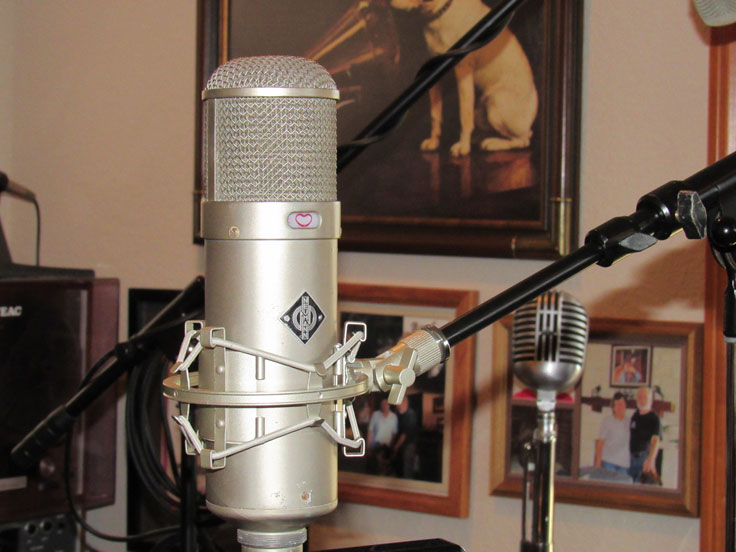
(summary from sale of U48 on eBay) The Neumann U47 is the granddaddy of large diaphragm condensers, with a justifiably legendary sound. It was the first post-war mic produced by Georg Neumann GmbH in West Berlin. Built around a World War II military radio tube with a capsule design from 1929, it became a bench mark mic in the early fifties. Engineers found out quickly that the sensitivity of the U47 greatly enhanced the detail of their recordings. And the combination of head grille, diaphragm, tube and output transformer created a magical tone that has reproduced the vocals of virtually every famous singer in recent music history.
 The U48 is essentially the same as the U47, except that it does cardioid and figure-eight patterns. The figure-eight capability of the U48 made it a favorite mic for recording the vocals of the Beatles. In many cases, John and Paul would both sing simultaneously into opposite sides of the same mic. This may have made it easier to be sparing with the use of mic inputs to the console, but it also forced the duo to match each other vocally, as their voices could not be separated afterward. As we all know, they easily rose to this challenge.
The U48 is essentially the same as the U47, except that it does cardioid and figure-eight patterns. The figure-eight capability of the U48 made it a favorite mic for recording the vocals of the Beatles. In many cases, John and Paul would both sing simultaneously into opposite sides of the same mic. This may have made it easier to be sparing with the use of mic inputs to the console, but it also forced the duo to match each other vocally, as their voices could not be separated afterward. As we all know, they easily rose to this challenge.
The single-mic technique became so prevalent on Beatles recordings, that Abbey Road sent several U47 mics back to Neumann to have them retrofitted as a U48, (since the U47 could only do cardioid and omni-directional). These mics were famously branded as U47/48's.
The U48 also saw a great deal of use for the recording of acoustic and electric guitars on the Beatles sessions until the Revolver-era saw a switch to the Neumann U67.
Item Specifics:
Neumann U48a microphone shock mount. The serial number of the mic is 118 and was manufactured in Germany in 1958.
It can be set to either cardioid or figure-eight and has built in feature that allows for the interchangeability of the U48 capsule with a U47 capsule. This is a feature unique to the U48 and U48a.
The difference between the U48 and U48a is that the U48a was specifically manufactured by Neumann for U.S. distribution by Gotham Audio, LLC. The U48a was tweaked to operate on the 110v power used in the U.S., as opposed to the U48 which was built to run on the European's 115v power grid. This small alteration solved the problem of overheating that was experienced when imported U48's were used in the U.S.
Neumann U87
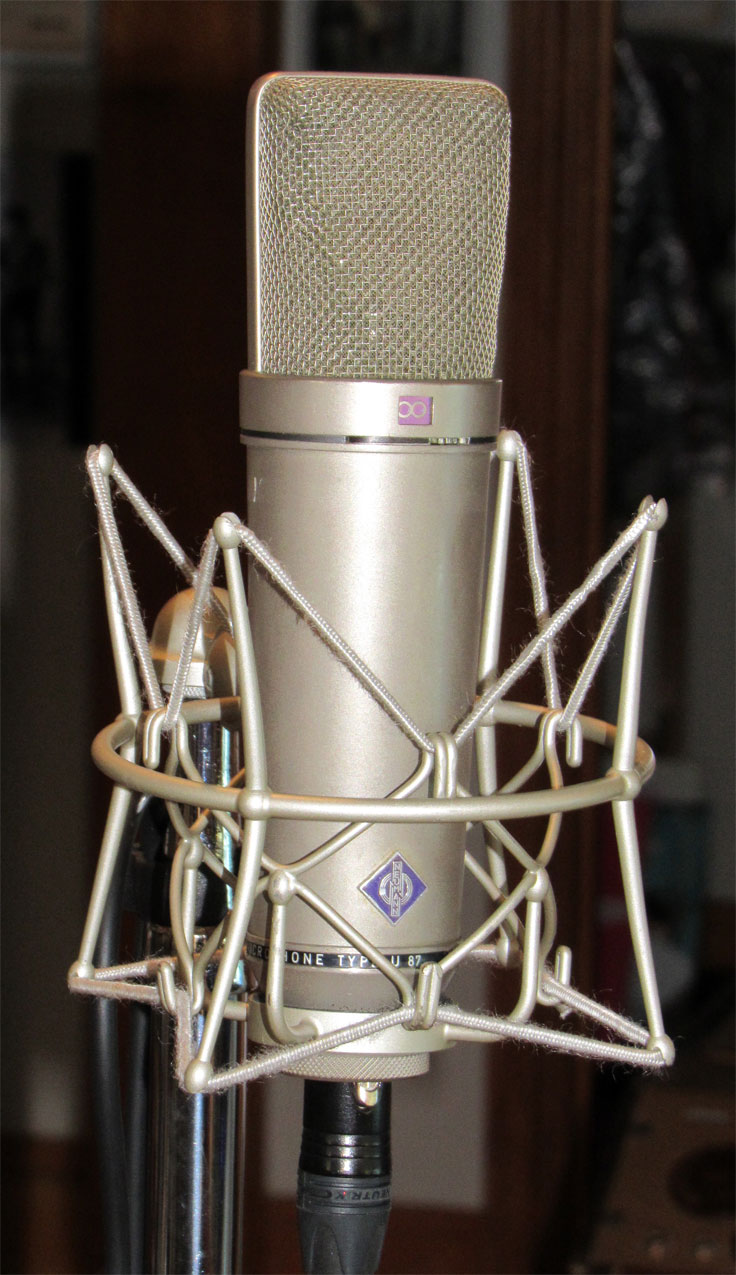


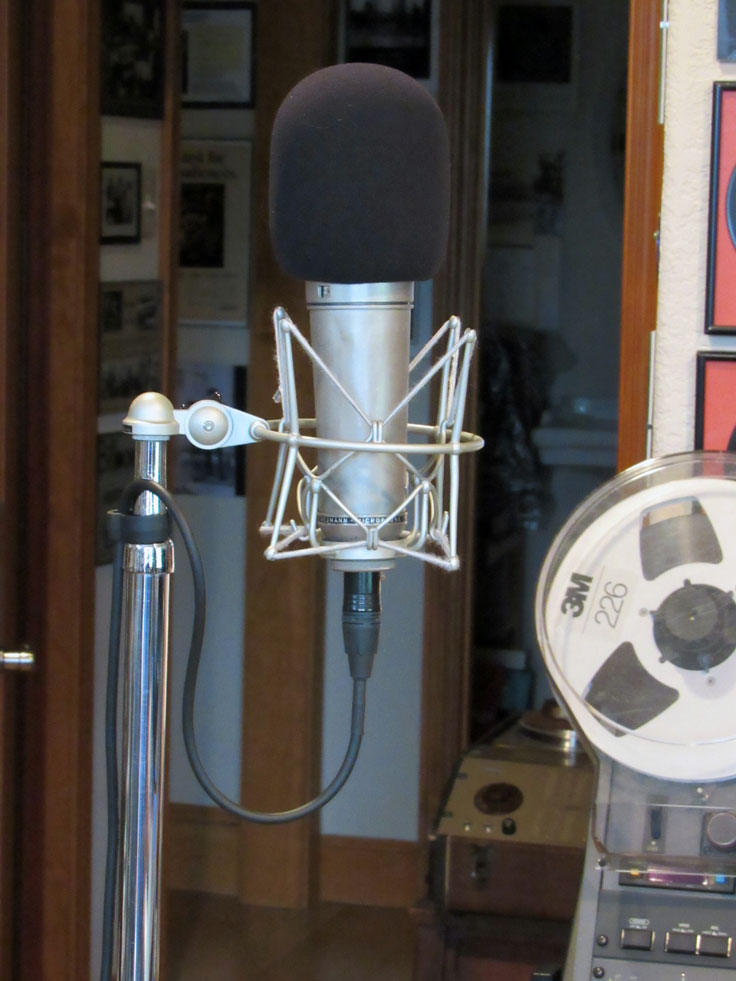


"The readers of the SOUND ON SOUND magazine have voted: U 87 Ai - the BEST MICROPHONE, announced during the Winter NAMM show 2012 in Anaheim, California.
The SOS award went to products, that "have made our lives in the studio all the more enjoyable". It is a further evidence for the reputation of the U 87 Ai as the world famous, professional standard studio condenser microphone. Until today the U 87 sets the mark in the microphone industry by which all others are measured.
The U 87 presents a wide range of features and versatility that make it to one of the most desirable mics available. Our users are recognising the microphone immediately by its distinctive design. Well-known for its warm and well balanced characteristics - your perfect choice as vocal microphone for all types of music and speech. The usage as main microphone for orchestra recordings or as spot mic for single instruments make it the most general-purpose microphone - in studios, for broadcasting, film and television.
The U 87* is equipped with a large dual-diaphragm capsule with three directional patterns: omnidirectional, cardioid and figure-8. These are selectable with a switch below the headgrille.
A 10 dB attenuation switch is located on the rear. It enables the microphone to handle sound pressure levels up to 127 dB without distortion.
Furthermore, the low frequency response can be reduced to compensate for proximity effect.
Applications
The U 87 Ai condenser microphone is a large diaphragm microphone with three polar patterns and a unique frequency and transient response characteristic.
Users recognize the microphone immediately by its distinctive design. It is a good choice for most general purpose applications in studios, for broadcasting, film and television.
The U 87 Ai is used as a main microphone for orchestra recordings, as a spot mic for single instruments, and extensively as a vocal microphone for all types of music and speech.
Acoustic features
The U 87 Ai is addressed from the front, marked with the Neumann logo. The frequency response of the cardioid and figure-8 directional characteristics are very flat for frontal sound incidence, even in the upper frequency range. The microphone can be used very close to a sound source without the sound becoming unnaturally harsh. By means of a high-pass filter interferences through subsonic and low frequencies are reduced remarkably. "
Neumann web site
1982 - 1983 Gotham Catalog featuring Neumann and Telefunken products - view catalog pdf
